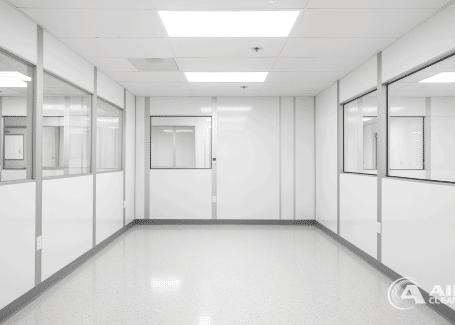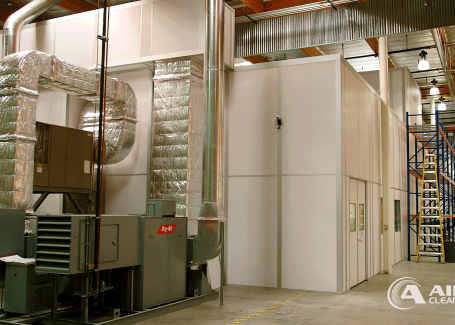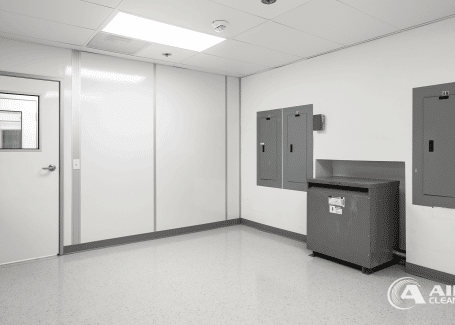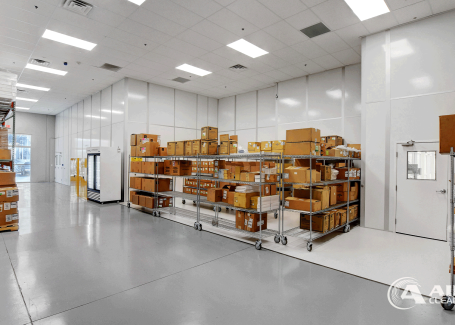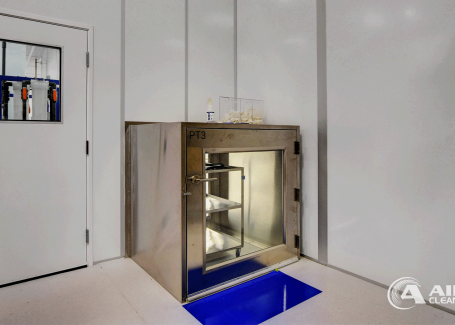Hardwall Cleanrooms
Hardwall cleanrooms provide better environmental control than softwall cleanrooms and can help you meet the strictest cleanliness requirements for ISO 5 to 8 spaces. Our freestanding, pre-engineered designs feature durable panelized wall systems with clear anodized or powder-coated aluminum extrusion frames. What’s more, all our designs are adjustable and can adapt easily to changing operational requirements.
These modular cleanroom wall systems are a superior alternative to conventional stick-built construction and will get your facility up and running more quickly, while minimizing costs.

Design & Features
Our hardwall cleanrooms are constructed with durable panel options such as aluminum, painted steel, high-texture FRP, smooth FRP, melamine, and more. The frames are made using powder-coated aluminum extrusion, which creates a strong and clean finish.
The grid-mounted HEPA/ULPA filter fan units (FFUs) and light fixtures maximize airflow and lighting. Insulated panels or double-wall design options provide added thermal and humidity control for vital applications. Our protocol can be configured for either recirculating or single-pass airflow, and can interface easily with a wide variety of HVAC and monitoring systems.
Furthermore, our prefabricated cleanrooms can be designed for multi-suite use, with cascading pressure differentials where needed. The aluminum extrusion framing allows for quick assembly with pre-punched and drilled pieces, making installation easier. We also manufacture gasketed and ungasketed ceiling grids, made from anodized aluminum and painted white for a secure, high-performance fit.
Panelized construction allows for large open spans and custom heights depending on spatial design. We can weld large supports for extra-tall walls up to 24 feet in height. Our standard roof span can reach up to 20 feet without beams or columns—or up to 30 feet if height permits in the existing space.
Advantages vs. Softwall Cleanrooms
Hardwall cleanrooms are excellent for controlling contamination and maintaining ISO 5 or 6 cleanliness levels with consistent results. They allow for precise environmental control, which softwall designs are not capable of providing. Unlike softwall configurations, our hardwall cleanrooms create a sturdy barrier against outside pollutants and offer long-term durability.
Some of the most important advantages of hardwall over softwall cleanrooms include:
- Solid wall construction (glass, acrylic, FRP, aluminum, stainless steel) instead of flexible vinyl curtains
- Greater durability, requiring less maintenance over time
- Suitable for stricter ISO classes with better particle control
- Can support recirculating air systems
- More stable for temperature, humidity, and pressure differentials
- Better for long-term use, and can be expanded or reconfigured as needed
Industries We Serve
Our hardwall cleanrooms are used in many fields, especially where strict environmental control is necessary. Some of the most common industries in which they are used include:
Pharmaceuticals
Medical Devices
Biotechnology
Semiconductors
Electronics
Aerospace
Defense
R&D
Food & Beverage
Nutraceuticals
Customization Options
Each of our hardwall cleanrooms can be customized in order to meet the unique needs of your business and industry.
Some examples of our customization choices include seismic-rated structural components for areas susceptible to earthquakes, ADA-compliant access ramps, doors, and related systems, customized surface treatments and finishes, and various material choices.
We will work closely with you to make sure your cleanroom meets all its objectives.
Better Contamination Control
Our hardwall cleanrooms are built solidly and provide better contamination protection than softwall spaces. They can easily maintain accurate positive and negative pressure differentials, which are often needed to meet the strictest ISO standards.
Tighter Environmental Control
Environmental conditions can be kept within very narrow ranges, which is important for many manufacturing processes. Such systems can also be integrated with enterprise-wide monitoring and control platforms.
Robust Construction
Hardwall modular cleanrooms are built tough, and can endure routine and thorough cleaning. Aluminum extrusion frames create a durable structure for different types of panel faces, ensuring long-term performance.
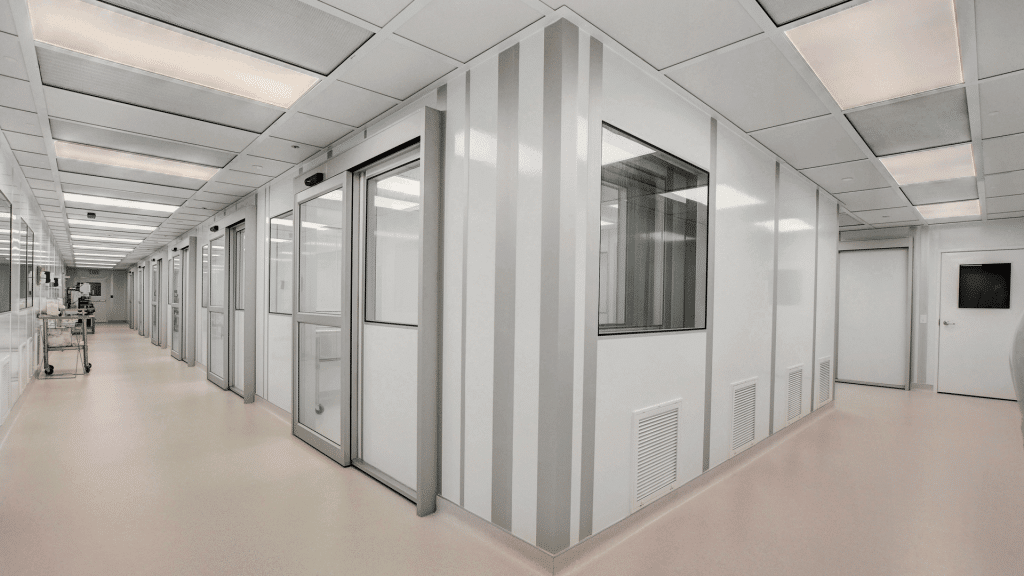
Contact
Leave Your Cleanroom in Expert Hands
FAQs About Hardwall Cleanrooms
In what specific applications might you find hardwall cleanrooms?
As we’ve mentioned already, hardwall cleanrooms are the best solution for industries that need strict control over contamination. They are used for drug manufacturing; semiconductor fabrication stages, such as photolithography; life sciences research; compounding pharmacies; and more.
How much can you customize hardwall cleanrooms to suit unique operational needs?
Hardwall cleanrooms can be made custom to fit a variety of operational requirements. You have a variety of panel surfaces to select from, such as aluminum, painted steel, high texture FRP, smooth FRP, and melamine, but it all depends on what you prefer for appearance and function. Hardwall cleanrooms may have insulated panels, static dissipative surfaces (and other ESD protection), and UV germicidal light covers, to name only a few options.
How do hardwall modular cleanrooms differ from traditionally built ones?
Traditional cleanroom construction, which is sometimes called “hard construction,” follows standard building practices. One crew frames the walls, another installs electrical inside the walls, and then drywall crews finish and paint. This process can involve patching, wainscoting, and multiple trades on site. Typically, traditional builds do not include a roof above the cleanroom ceiling and must be supported with kickers that run up to the facility’s structural ceiling. Mechanical systems are also more expensive, since each HEPA filter and return must be ducted directly, requiring more equipment and personnel.


